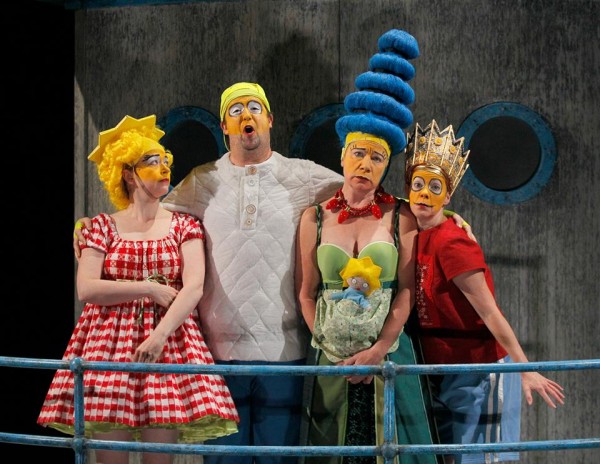
Pictured (L-R): Christine Marie Brown, Erik Gratton, Anne Allgood, and Bhama Roget. Photo by Chris Bennion.
Review: Mr. Burns, a post-electric play by Anne Washburn. Score by Michael Friedman. Lyrics by Anne Washburn. Directed by John Langs. Choreographed by Crystal Dawn Munkers. With Adam Standley, Anne Allgood, Christine Marie Brown, Andrew Lee Creech, Erik Gratton, Claudine Mboligikpelani Nako, Bhama Roget, and Robertson Witmer. Now through November 15, 2015 at ACT.
Cowabunga!
What do you do when a talented cast/crew are stuck in a trite, shallow, trivial and pop culture obsessed piece of theater doo doo?
Don’t have a cow, man!
What do you say when a respected theater picks a piece of doo doo play in hopes its apparent topicality and “coolness” will appeal to the younger audiences so desperately needed/wanted by large arts organizations?
DOH!!!
How long can I keep up this irritating “stunt” of asking rhetorical questions and answering them with beloved quotes from the iconic cartoon television series, “The Simpsons” currently in its 134th year of new episodes on Fox?
If I follow the example of playwright Anne Washburn, the author of the truly awful play, Mr. Burns, a post-electric play, currently being staged at ACT’s Falls Theatre, for about 2 and a half hours…
I really can’t express to you how much I hated this play. Despite the talent of its strong local cast and some superb design including clever work by Matthew Smucker (Set) and Deb Trout (Costumes) and some fun choreography from Crystal Dawn Munkers, there’s nothing creative or clever about its smug, pop culture obsessed script that’s about as deep as an undergrad’s term paper on “The Relevance of TV’s Favorite Cartoon Family in 21st Century Post Modern Culture”. It’s a shallow, navel gazing work that bores when it should inspire and states obvious observations without any wit or originality. This play has about as much integrity as Mayor Quimby on a weekend long bender with the current reigning Miss Springfield at the nearest EconoLodge out by the Krusty Burger on the interstate.
But, to fill you in, you should know what the hell it’s supposed to be about. “Mr. Burns” is set in a near future immediately after some apocalyptic events that have apparently killed millions worldwide which subsequently led to the collapse of the power grid, particularly the nuclear power planets around the world which are in meltdown mode. The play opens in the woods somewhere in New England where a group of survivors sit huddled around a campfire fondly reminiscing about one of their favorite episodes of “The Simpsons” the “Cape Feare” episode which featured Bart’s crazed nemesis Sideshow Bob (voiced by actor Kelsey Grammer) getting out of prison and vowing to kill the boy who landed him there in the first place. The episode primarily serves as a parody of “Cape Fear” the 1962 cinema thriller which was subsequently remade in 1991 by Martin Scorsese, that features a hardened and crazed con (played by Robert Mitchum in the original/Robert DeNiro in the remake) who similarly stalks a dimwitted family. The Simpson’s episode also throws in a parody of Gilbert & Sullivan’s “HMS Pinafore” and turns into a crazed mash-up of several different pieces of art/culture, a trademark of classic “Simpsons” episodes. There’s a good reason that “Cape Feare” is the episode the characters in “Mr. Burns” are fondly remembering…it’s a terrific episode of a show in its artistic prime.
And, the first act of “Mr. Burns” isn’t bad as we establish the characters of the play and its structure. But, it’s also a bit long winded, a problem throughout the play. The notion of people in peril trying to cope with a dire situation (the end of the world) by fondly trying to remember all the funny lines in a beloved piece of pop entertainment is a good germ of an idea…for a sketch or a one act play. But, it doesn’t really hold up. The first act of “Mr. Burns” isn’t that long but even so, it does drag at times. There’s a long monologue that Survivor Maria (Christine Marie Brown) relates about another survivor who ventured into a decaying nuclear power plant. It goes on for a VERY long time and it’s not that great of a story. Playwright Washburn is desperately trying to hang the heart of her play around one of its main themes, “nuclear power is evil” but it’s frequently so heavy handed that you don’t care.
Washburn’s other theme she’s trying to sell is the notion of humanity clinging to its beloved stories/tales to the point where people in the near future, in a world apparently without power, will travel around in acting troupes re-enacting the shows they’ve been able to piece together from collected memories. It’s a bit like the end of Ray Bradbury’s “Fahrenheit 451” where books are banned so people who love literature/books start memorizing them to keep them alive and pass them along to future generations with each person specializing in one book and “becoming” that book and hopefully passing it along to someone else to memorize before they die. The second act of “Mr.Burns” takes place 7 years after the first where the survivors of a “post electric” world do just that and the group that we met in Act One, have banded together to work as a traveling band of “Simpsons” reenactors.
It’s an interesting idea until you think about it for more than five seconds. Washburn is determined to sell her two main themes (nuclear power = evil; the power of stories to live on via oral storytelling) to the detriment of common sense. Even if the demise of traditional power plants (oil, coal, nuclear) led to the collapse of the power grid, there ARE other options to power up electronic devices including generators and batteries and the use of wind, hydro and solar power. One of the threads of “Mr. Burns” is about the characters trying to piece together episodes of old shows via memory, but I’m convinced that even in a post-apocalyptic world devoid of TRADITIONAL power sources, that a person or two might figure out a way to run a DVD player (and WATCH and transcribe shows) off solar or wind powered generators/batteries.
Act Two was a complete mess in illogical choices but Act Three is…something else. It’s set 75 years later where society has mutated to the point where “The Simpson’s” has become something totemic which is performed very stylistically and in masks as an allegorical folk pageant about the evils of nuclear power. The story of “Cape Feare” has apparently mutated so much over the years that now the villain of the piece IS Mr. Burns (instead of Sideshow Bob) and the Simpsons themselves have mutated their own personalities and motivations. On paper, that sounds great and parts of Act 3 have flashes of brilliance. But, it’s also highly derivative and repetitive and feels VERY long and draggy. It’s 30 minutes or so but feels like 50 and it would work best as maybe a 10 minute ballet. (Note: in some ways, this stylized performance feels a like like “Small House of Uncle Thomas” number from the musical “The King and I” which itself is a stylized piece created by Thai/Siamese students after hearing the story of the the anti-slavery novel, “Uncle Tom’s Cabin”. In other words, one culture trying to reinterpret the folk culture of another culture.) Again, this “bastardization” only makes sense if you suspend ALL disbelief that society wouldn’t be able to figure out how to power a DVD player or VCR without a conventional power source.
It also doesn’t help that the music written for this segment (by Anne Washburn and Michael Friedman) is sing songingly awful and pedantic to the point the “singing” sounds like nails on a chalkboard. It’s well choreographed by Ms Munkers and actor Adam Standley really shines in his performance as “Mr. Burns” but again, it’s very long winded and full of repetition. The terrific design can’t save it either.
All that said (in a nutshell: Washburn’s failure to really create a cohesive theme and her annoying over reliance on pop culture references) make for lumpy and leaden piece of dramatic literature. “Mr. Burns, a post-electric play” is a cute idea…for a couple of 10 minute one acts, at best. If you really love “The Simpsons” then go watch them.



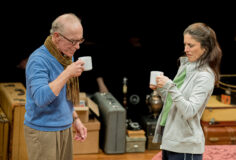


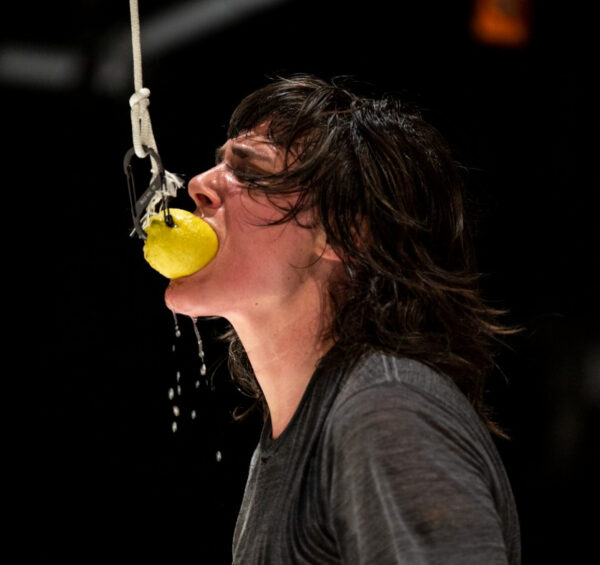
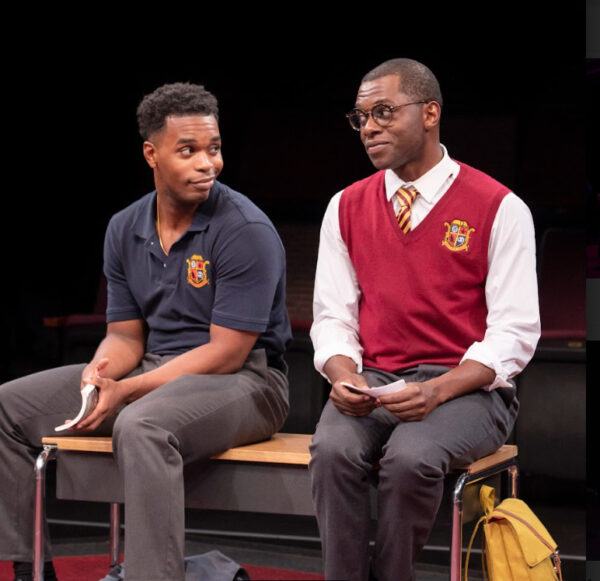

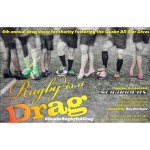





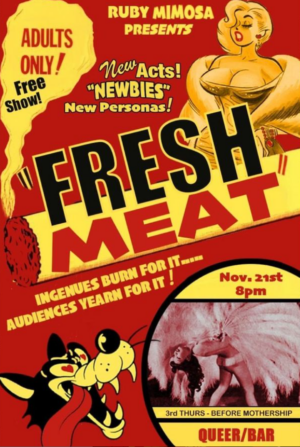








Love your review. Obviously you liked it as much as I did.i
Agreed. Vert very very agreed.